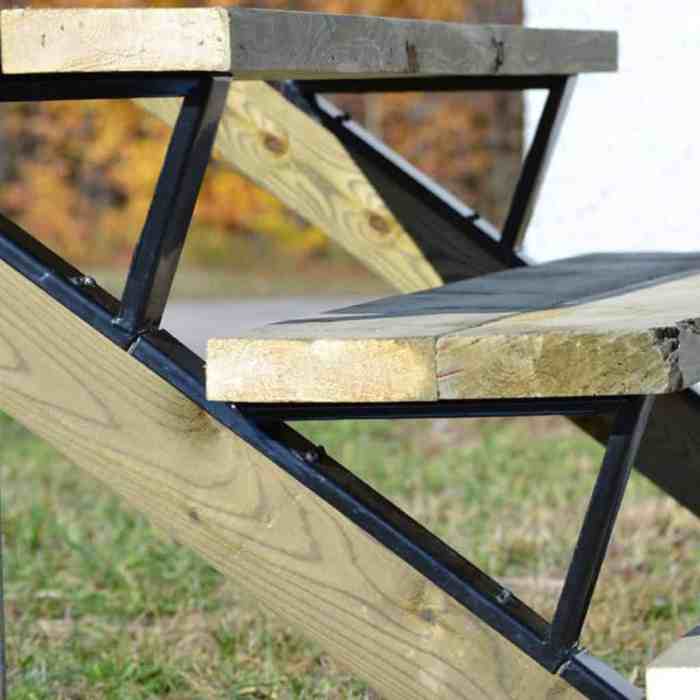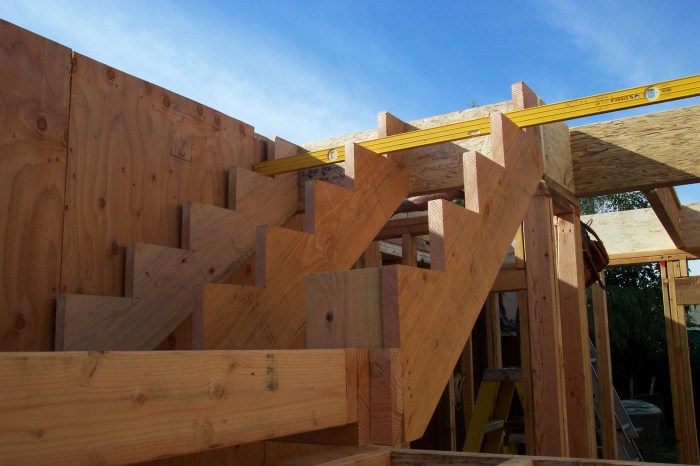The handrail installed on a closed stairway is called an – The handrail installed on a closed stairway is called a stair rail. It is an essential safety feature that provides support and stability to individuals as they ascend or descend the stairs. Stair rails are typically made of wood, metal, or plastic and are designed to withstand significant weight and force.
In this comprehensive guide, we will delve into the various aspects of stair rails, including their function, types, installation considerations, maintenance and repair, and relevant codes and regulations. By understanding these key elements, you can ensure that your closed stairway is equipped with a safe and compliant stair rail.
The Handrail’s Function: The Handrail Installed On A Closed Stairway Is Called An

On a closed stairway, the handrail serves a crucial safety function. It provides a secure and stable support for individuals as they ascend or descend the stairs, particularly in situations where balance may be compromised.
The handrail also helps to prevent falls by providing a tactile guide for individuals with limited visibility or mobility. Its presence instils a sense of confidence and security, making the use of stairs safer and more accessible.
Types of Handrails
Handrails on closed stairways come in a variety of types, each with its own unique characteristics:
- Wooden handrails:Classic and versatile, wooden handrails are crafted from various wood species and can be stained or painted to match the surrounding décor.
- Metal handrails:Durable and sturdy, metal handrails are often made of stainless steel or wrought iron and can provide a modern or industrial aesthetic.
- Composite handrails:A combination of materials, composite handrails offer a balance of strength, durability, and affordability.
Installation Considerations
Proper installation of handrails on closed stairways is essential for ensuring their safety and functionality:
- Height:Handrails should be installed at a height of 34-38 inches (86-97 cm) above the stair tread’s leading edge.
- Length:Handrails should extend at least 12 inches (30 cm) beyond the top and bottom steps.
- Spacing:Handrails should be spaced no more than 6 inches (15 cm) apart to provide a secure grip.
- Mounting:Handrails must be securely mounted to the wall or stair structure using appropriate fasteners.
- Cleaning:Handrails should be cleaned periodically to remove dirt and debris using mild soap and water.
- Inspection:Handrails should be inspected regularly for any signs of damage, such as cracks, splinters, or loose connections.
- Repair:Damaged handrails should be repaired promptly to maintain their safety and functionality.
- International Building Code (IBC):The IBC sets forth minimum requirements for handrail height, length, and spacing.
- Americans with Disabilities Act (ADA):The ADA mandates that handrails be accessible to individuals with disabilities, including those with limited mobility or vision.
Maintenance and Repair
Regular maintenance and occasional repairs are necessary to keep handrails on closed stairways in optimal condition:
Codes and Regulations, The handrail installed on a closed stairway is called an
Building codes and regulations govern the installation and maintenance of handrails on closed stairways:
Essential FAQs
What is the primary purpose of a stair rail?
The primary purpose of a stair rail is to provide support and stability to individuals as they ascend or descend a closed stairway.
What are the different types of stair rails?
There are various types of stair rails, including wooden rails, metal rails, and plastic rails. Each type has its own unique characteristics and advantages.
How should a stair rail be installed?
Stair rails should be installed according to specific guidelines, including proper height, length, and spacing requirements. Secure mounting and anchoring are also essential for ensuring the stability of the rail.

